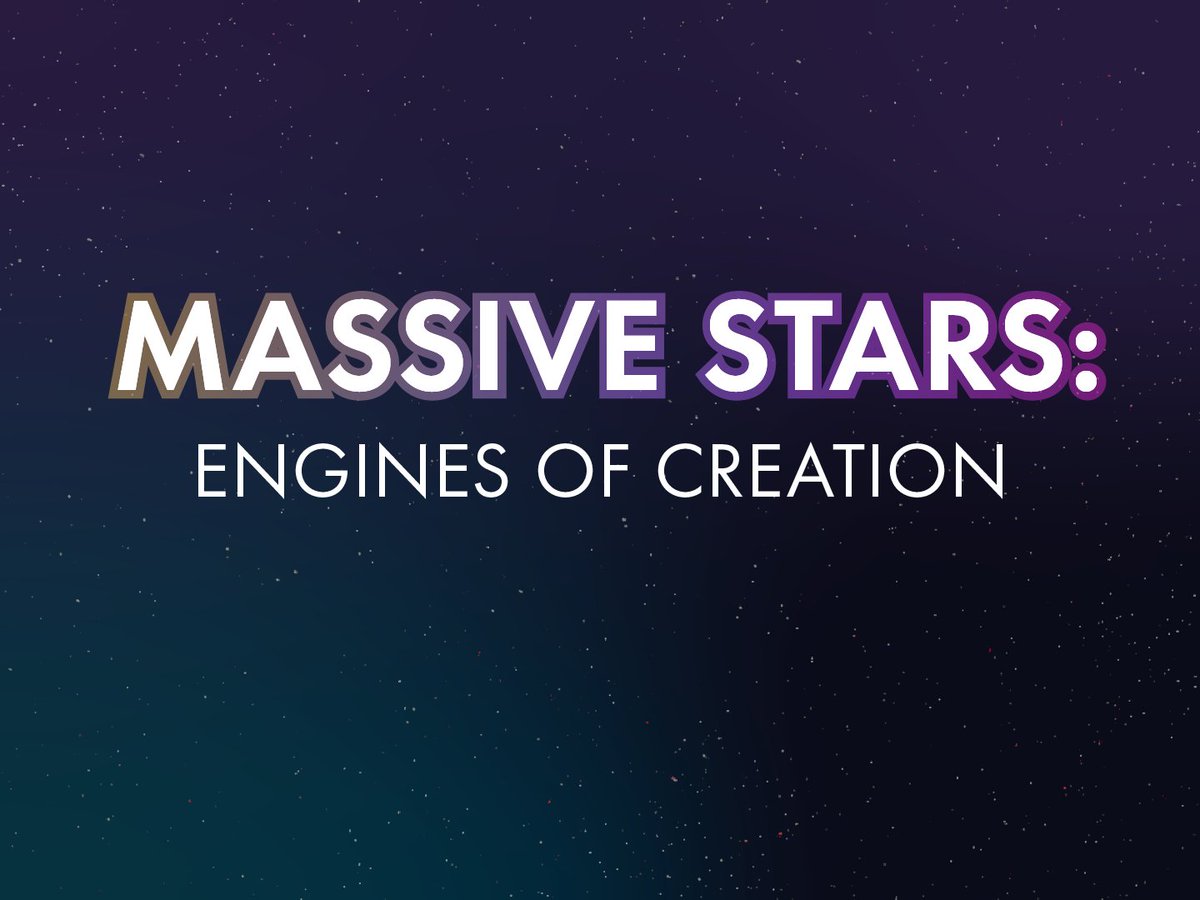
We’re all made of star stuff, right? 🌟
As they die, massive stars—at least 8 times bigger than our sun—populate the universe with new elements. How does that happen? We’ll show you each step! 👇🏼 (1/7)
Credit: NASA, ESA, and L. Hustak (STScI).
As they die, massive stars—at least 8 times bigger than our sun—populate the universe with new elements. How does that happen? We’ll show you each step! 👇🏼 (1/7)
Credit: NASA, ESA, and L. Hustak (STScI).

Stars don’t normally explode 💥 because they balance two forces: gravity, which wants to crush all of the gas towards the center, and pressure from fusion, which pushes outward.
The first stage of a star’s life is fueled by hydrogen-to-helium fusion. (2/7)
The first stage of a star’s life is fueled by hydrogen-to-helium fusion. (2/7)

Over a star’s lifetime, the core will run out of fuel, contract and heat up, and begin new fusion reactions.
This creates a multi-layered core, with heavier elements fusing in the hot, dense center and shells of lighter elements fusing at cooler temperatures. (3/7)
This creates a multi-layered core, with heavier elements fusing in the hot, dense center and shells of lighter elements fusing at cooler temperatures. (3/7)

The shell-building process begins when a star runs out of hydrogen in its core.
Gravity crushes the core, making it hotter and smaller. Eventually, it gets hot enough to fuse helium into carbon, surrounded by a shell that fuses hydrogen into helium. (4/7)
Gravity crushes the core, making it hotter and smaller. Eventually, it gets hot enough to fuse helium into carbon, surrounded by a shell that fuses hydrogen into helium. (4/7)

The after the core exhausts its helium supply, the process repeats. The carbon core contracts further and reaches high enough temperatures to fuse carbon into oxygen, then silicon, and finally to iron. Some of these steps take thousands of years. Others take a single day.🤯 (5/7) 





When the iron core cannot produce energy to balance the weight of the surrounding gas, it collapses. Boom, SUPERNOVA! In less than a second, the star implodes & then explodes, leaving behind a supernova remnant. Elements created inside the 🌟/💥 spread through the universe. (6/7) 

All of these steps that highlight the engines of creation can be found in one amazing—and downloadable—graphic 👉🏼 bit.ly/3I4Fubj (7/7) 

• • •
Missing some Tweet in this thread? You can try to
force a refresh










